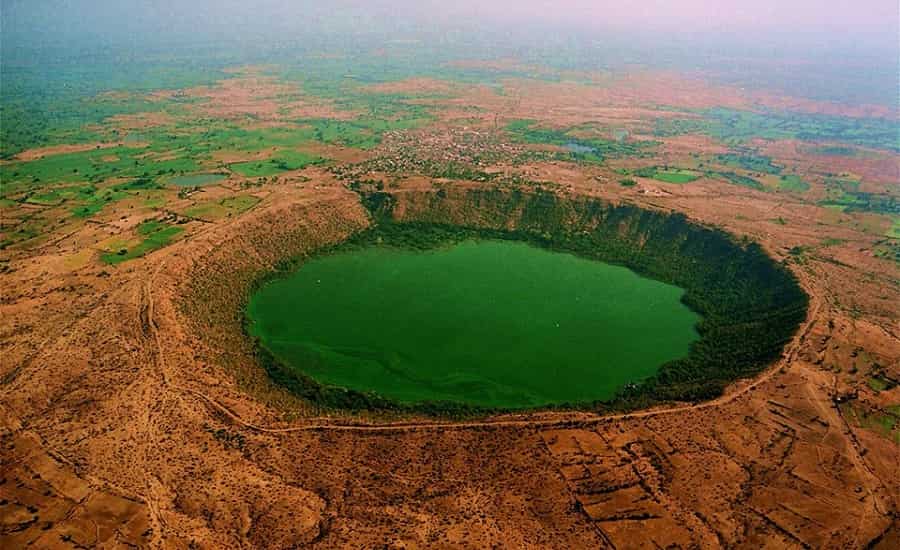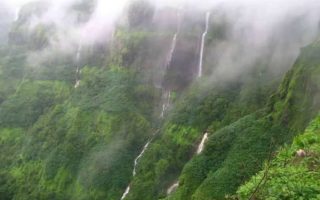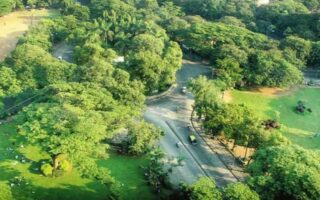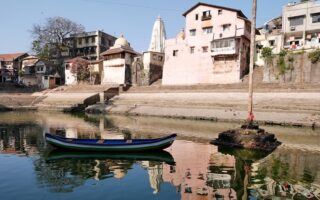Everything that exists on the earth reflects art. Be it a creation of nature or an output of a human, nothing is born out of random thoughts or unplanned initiatives. The Lonar Crater in the state of Maharashtra shows how nature can get into the robe of an artist and create something which is not just beautiful, but also a unique design that is not found in abundance, thus becoming a coveted destination for travel junkies.

Location
The Lonar Crater Lake is situated in the Lonar town of Buldhana district.
History
The earliest mentions of this lake are found in various Hindu texts. The lake was first visited by a Britisher named J.E. Alexander in the nineteenth century. The studies conducted by various experts suggest that the age of the crater is anywhere between 81000 to 656000 years.
The present day district of Buldhana was ruled by several emperors in the ancient period. Beginning from the reign of Mughal Dynasty, the district saw a boom in trade and is still a major commercial centre of the state.
Geography
The average diameter of the lake is around 1.2 kilometres, while that of the crater is approximately 1.8 kilometres. The basin is encompassed by low hills. It appears to be round, but is actually oval shaped. The circumference of the lake, when measured from the base is around 4.8 kilometres. The slopes around the lake are inhabited by teak trees, while the date-palm, tamarind and babul trees can be seen around the basin.
It was believed that the lake originated in the crater due to volcanic activities, a fact which was later discarded by researchers who reached to a conclusion that the crater formed after a meteorite or a comet had fallen at this site. This statement was declared after researchers found several elements at the crater which could be formed only through shock metamorphism, a process initiated by the hypervelocity impact of extra-terrestrial objects. After detailed studies, the crater was divided into five zones, i.e., the outermost ejecta blanket, crater rim, slopes, crater basin and the lake itself.
The lake is also known for various byproducts obtained through it. Over the years, scientists have found that the saline deposits found here are different from those found in most of the lakes in India. Through crystallization of salt and soda carbonates in the shore, several byproducts are found near the shores, namely khuppal, nimakdalla, bhuski, papri, etc.
What to See
In the ancient period, the lake was surrounded by a lot of temples, which now stand in the state of ruins, except for the Daitya Sudan Temple and the Kamalja Devi Temple.
Daitya Sudan Temple
A temple dedicated to Lord Vishnu, this structure dates back to the period when the Chalukyas were ruling the region. The temple depicts the shape of an irregular star and carries carvings similar to those found in the temples of Khajuraho in Madhya Pradesh. The idol placed here is believed to be made out of stone and metal. The roof of this temple suggests that the construction of the temple was stopped in the midway, reasons for which are yet to be ascertained.
Kamalja Devi Temple
This temple is located very close to the lake although the water level never reaches to the point where it can come in contact with the temple. This temple also features rich carvings. Other than the historical structures around the Lonar Crater Lake, visitors can also watch and photograph the birds, reptiles, mammals and the various species of trees.
Out of the various shrubs that grow near the lake, a medicinal shrub Sanjivani is considered most important amongst all. It is used in preparation of several medicines. The alkali level of 11pH makes it impossible for any plants or animals to survive inside the lake.
Best Time to Visit
The best time to visit the lake is during the rainy season. At this time, the weather enhances the presence of greenery and the lake also brims with water, making it a pleasant experience for the visitors.
How to Reach
The airport closest to the Lonar Crater Lake is located in Aurangabad at a distance of 122 kilometres from the site, while the closest railway station is located at Malkapur, which falls in the Mumbai Bhusawal rail route. Another closely located railway station near the town is at Shegaon. Visitors arriving through road network must reach Aurangabad and then board a state transport run bus to the town of Lonar.


